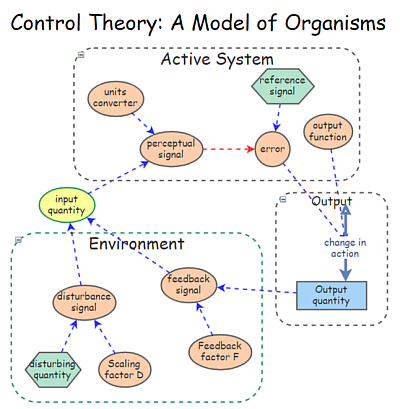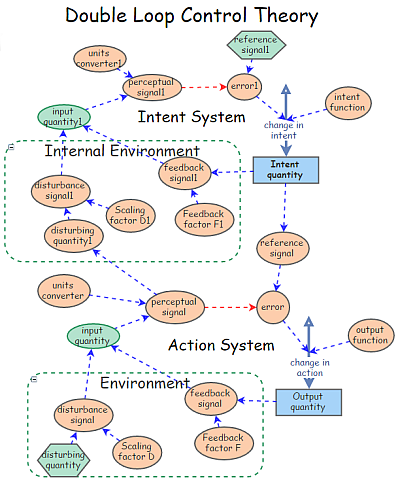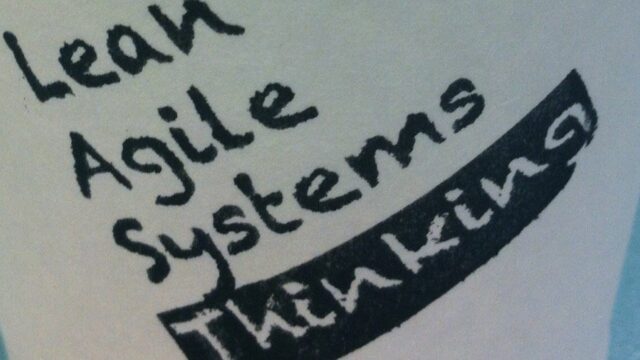
Applied Understanding: Control Theory [Systems thinking & modelling series]
This is part 23 of a series of articles featuring the book Beyond Connecting the Dots, Modeling for Meaningful Results.
Control systems act to make their own input match internal standards or reference signals. Competent control systems create illusions of stimulus-response causality. Stimulus-response theory can approximate the relationship between disturbance and action, but it can’t predict the consequences of behavior. These consequences are maintained despite disturbances.
The “Control Theory: A Model of Organisms” presents an initial view of the interrelations responsible for the behavior of an organism in response to an input stimulus.
The environment and the active system are both engaged in the output.
Need help? See the Model instructions
The “Double Loop Control Theory” model is an elaboration of the previous model. It provides further insights into the relevant relations responsible for the behavior of organisms in response to stimulus.
There is a an equivalence between control theory and double loop learning.
Need help? See the Model instructions
Next edition: Applied Understanding: Increasing Indebtedness to Banks.
Article sources: Beyond Connecting the Dots, Insight Maker. Reproduced by permission.
Header image source: Beyond Connecting the Dots.




